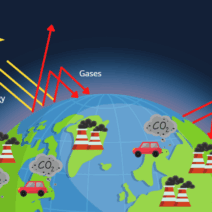In the vast and ever-rolling tapestry of planetary energy sources, tidal energy emerges as a compelling thread woven with the potential for sustainability. Like the rhythmic breathing of the ocean, tides embody a powerful, predictable force that can be harnessed for human use. The challenge before us is not merely to capture this energy, but to conserve and utilize it in a manner that ensures its availability for generations to come.
The tides, dancing to the gravitational pull between the Earth, the moon, and the sun, exhibit an extraordinary consistency. Every day, the waters rise and fall, an eternal ebb and flow that mirrors the cyclical nature of life itself. As stewards of the planet, it falls upon us to navigate the waves of innovation and conservation. Herein lies a pathway to achieving sustainable tidal energy utilization.
To begin with, the conservation of tidal energy necessitates a comprehensive understanding of the methodologies employed in its extraction. Tidal turbines, akin to colossal underwater windmills, are often deployed to convert the kinetic energy of moving water into electricity. These mechanical marvels must be designed for maximum efficiency, minimizing energy loss through friction and drag. By utilizing advanced materials and engineering techniques, turbine designs can enhance productivity, thus conserving the energy harvested from tidal motions.
Analogous to a well-tuned instrument, the optimization of tidal energy systems relies on precision. The sophistication of control systems used in tidal energy generation plays a crucial role. Real-time monitoring of tidal patterns allows operators to adjust their energy extraction methods dynamically. By anticipating the peaks and troughs of tidal movements, we can achieve a more harmonious relationship with this renewable resource, much like a musician attunes their performance to the natural cadence of the symphony.
Furthermore, the concept of energy storage becomes pivotal in the quest for sustainability. Tides may be reliable, but the generation of energy is often intermittent. Employing cutting-edge battery technologies or even leveraging existing hydroelectric reservoirs can serve as formidable strategies for energy storage. When the tides are high and production peaks, excess energy can be harnessed and stored for later use, akin to a squirrel stockpiling acorns for winter. This ensures that the energy drawn from the tides is not wasted but conserved, ready to feed the demands of a society that increasingly relies on green energy.
Community engagement plays an equally significant role in the conservation of tidal energy. The establishment of tidal energy projects is as much a social endeavor as it is a technological one. Engaging local communities in the planning and implementation phases fosters a sense of ownership and responsibility. When individuals feel that they have a stake in these renewable projects, they are more likely to advocate for their longevity. Educational programs can illuminate the importance of tidal energy and its potential for reducing the carbon footprint, weaving the stories of the tides into the cultural fabric of coastal communities.
Additionally, the preservation of marine ecosystems is integral to sustaining tidal energy. The construction and operation of tidal energy infrastructure must be executed with an acute awareness of the surrounding flora and fauna. Environmental assessments can guide the decision-making process, ensuring that the whimsical dance of the tides does not disrupt the delicate interplay of marine life. Designing turbines that allow for the safe passage of fish and other aquatic organisms underscores the principle of coexistence. Just as the pebble creates ripples across the water’s surface, so too must our actions be conscious of their far-reaching impacts.
Policies and regulations surrounding tidal energy deployment also play a crucial role. Governments need to establish frameworks that promote innovation while maintaining stringent environmental protections. Incentives for research and development can catalyze breakthroughs in tidal energy technology. Moreover, collaborative international efforts in the sharing of knowledge, best practices, and technological advancements can amplify the global movement towards sustainable tidal energy utilization. Think of it as a relay race: the baton, representing knowledge and innovation, must be passed seamlessly to achieve the ultimate goal of a greener future.
Strategic partnerships between private entities, governmental bodies, and academic institutions can pave the way for a robust tidal energy sector. Engaging in multidisciplinary research can yield innovative solutions to current challenges, facilitating the emergence of resilient tidal energy infrastructures. By interlinking various fields of study—engineering, marine biology, environmental science, and economics—the collective expertise can foster advancements that may redefine our approach to energy production.
Lastly, the adoption of a circular economy model in tidal energy—whereby waste is minimized and resources are continually repurposed—can augment sustainability efforts. Reusing materials in the construction of tidal energy infrastructure, or incorporating renewable resources into production processes, can diminish the environmental footprint. Picture the tidal energy system as a living organism, where every component is vital for its survival, just as nutrients circulate within an ecosystem to sustain life.
In conclusion, the conservation of tidal energy for sustainable use is a multifaceted endeavor that invokes the symbiotic relationship between technological advancement and environmental stewardship. As we harness the tides’ inexorable power, it is crucial to cultivate methodologies that prioritize efficiency, community involvement, ecological preservation, supportive policies, collaborative research, and circular practices. By doing so, we can ride the waves of this renewable energy source, ensuring that the rhythmic dance of the tides continues to provide for our needs long into the future. Our responsibility is to respect the dance of nature, allowing it to flow harmoniously into a sustainable legacy for our planet.






